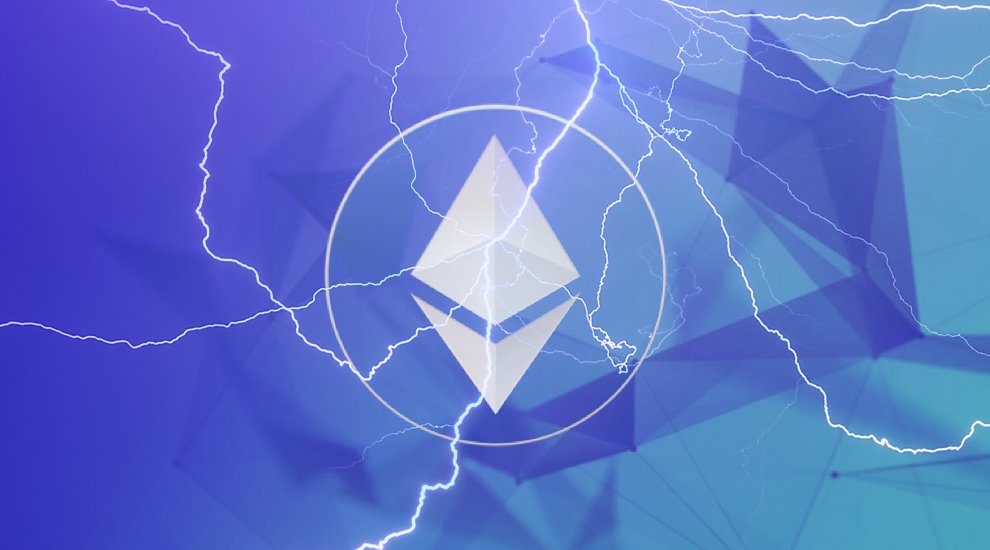Lightning Fast Raiden Network Coming to Ethereum Blockchain
Scalability is one of the main challenges faced by distributed ledger technology. It is widely felt that in order to challenge traditional payment networks and assume a key role in the decentralized future of the internet, blockchains must find ways to radically improve their throughput, measured in number of transactions per second.
“Today’s representative blockchain such as Bitcoin takes 10 min or longer to confirm transactions, achieves 7 transactions/sec maximum throughput,” note the authors of a recent research paper titled “On Scaling Decentralized Blockchains,” presented at the Financial Cryptography and Data Security 2016 conference. “In comparison, a mainstream payment processor such as Visa credit card confirms a transaction within seconds and processes 2000 transactions/sec on average, with a peak rate of 56,000 transactions/sec.”
On the Bitcoin blockchain, lightning networks offer a promising approach to Bitcoin scalability, enabling the Bitcoin system to process transactions at a high rate and low cost, thereby positioning themselves as suitable alternatives to existing payment networks. Now, a similar counterpart is set to emerge on the Ethereum blockchain: the Raiden network.
In a lightning network, related transactions take place almost instantly on off-chain “micropayment channels” and only the final settlement is processed by the blockchain. While there are interesting preliminary implementations, the adoption of lightning networks in Bitcoin is likely to take some time because it requires appropriate tweaks to the Bitcoin Core platform.
But Bitcoin is not the only blockchain in town. Ethereum, an alternative blockchain technology framework which offers higher flexibility and programmability for smart contracts, is gaining momentum at an impressive rate, despite momentary setbacks like the recent drama around The DAO.
Recently R3 commissioned Ethereum creator Vitalik Buterin to write a report on Ethereum’s design, upcoming technical developments and applications in private systems. Buterin’s 44-page report gives a detailed overview of Ethereum’s overall architecture and technical design, current status and development roadmap.
In a commentary on Buterin’s paper, R3 Senior Strategy Associate Kathleen Breitman noted that scalability is a key outstanding question for distributed ledger solutions in capital markets; blockchain technologies are, by orders of magnitude, still very much behind the transaction throughput of mainstream financial networks.
Buterin’s roadmap for Ethereum recognizes and addresses the importance of scalability. In particular, state channels — a generalization of the lightning network concept in Bitcoin — would permit conducting most transactions off-chain between parties directly, using the blockchain only as a kind of final arbiter in case of disputes.
The Raiden Network is one of the first implementations of state channels for Ethereum blockchains. In a first proof of concept, Raiden tokens were exchanged between nodes with the opening, closing and settlement of channels taking place on the Ethereum testnet, while the actual transfers happened off-chain, International Business Times reports. The Raiden Network reduces data traffic on the blockchain by combining thousands or even millions of transactions into a single on-blockchain transaction. This reduction could place the throughput of mainstream payment networks such as Visa within reach, as well as opening up possibilities for internet of things (IoT) applications or micropayments for web-based content.
According to Heiko Hees, CEO of Brainbot Technologies and creator of Raiden, Ethereum is better suited to Lightning-like payment channels than Bitcoin. “In Bitcoin the scripting language is rather limited so it’s way more complicated to set it up,” said Hees. “Setting this up on Ethereum is straightforward; any developer can easily understand the smart contract involved. The other difference is that until Bitcoin implements Segregated Witness to fix the transaction malleability issue, they cannot do Lightning.”
According to the Raiden website, the new technology permits leveraging off-chain state networks to extend Ethereum with scalability to more than 1,000,000 transfers per second, near-instant transactions with very low fees, confidentiality, interoperability with other Ethereum applications and support for micropayments.
Instead of sending all transactions immediately to the blockchain (which is the main scalability bottleneck), the Raiden Network lets users privately exchange signed transfer agreements and secure deposits. Raiden nodes, implemented as an extension to Ethereum with a simple API, talk to each other for off-chain transfers and use the Ethereum blockchain to manage deposits and settlements.
Hees hopes to demonstrate, perhaps in only a few weeks, that the Raiden Network can scale to as much as 100,000 transactions per second. Since the system can allow transactions as small as a millionth of a dollar, Hees hopes that it will find applications for the IoT, as well as for machine-to-machine and application-to-API transactions.
Currently under development, Raiden expects to release the alpha version in Q3 of 2016.
The post Lightning Fast Raiden Network Coming to Ethereum Blockchain appeared first on Bitcoin Magazine.



